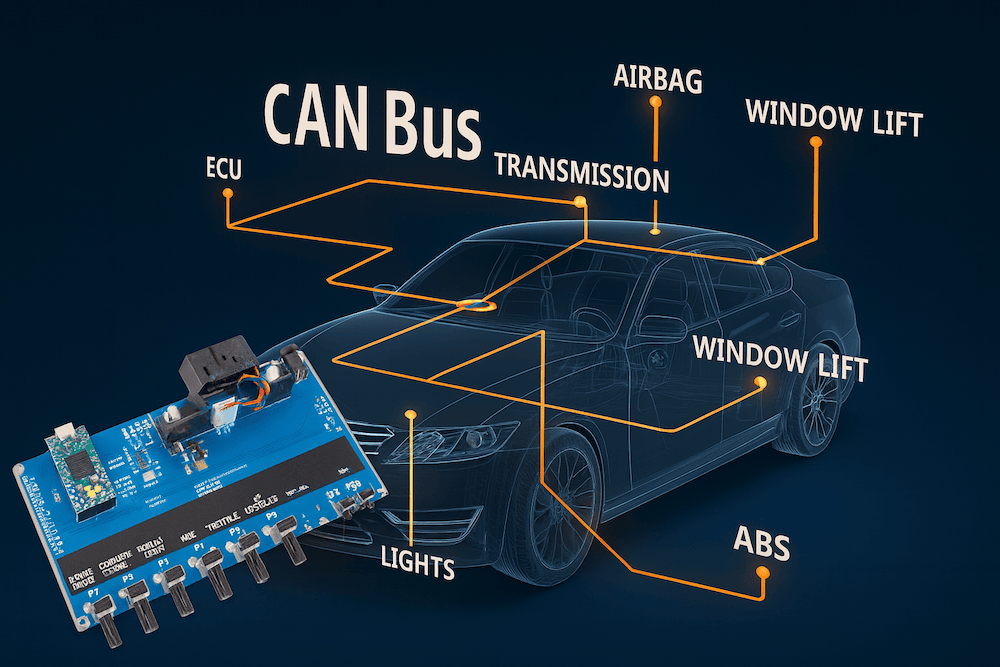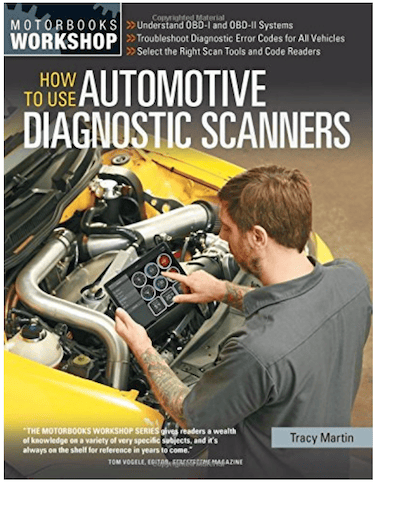Blog
Recent Posts
OBD-II CAN Bus ECU Simulator: Learn Vehicle Diagnostics, Protocols, and Software Development
Posted by on
 The Teensy 4.0 OBD-II CAN-Bus ECU Simulator offered by Copperhill Technologies is a powerful and versatile tool for developers, engineers, educators, and hobbyists working with automotive networks. By emulating an engine control unit (ECU) through a standard OBD-II interface, this compact platform allows safe testing, prototyping, and diagnostic training—without requiring direct access to a vehicle.
The Teensy 4.0 OBD-II CAN-Bus ECU Simulator offered by Copperhill Technologies is a powerful and versatile tool for developers, engineers, educators, and hobbyists working with automotive networks. By emulating an engine control unit (ECU) through a standard OBD-II interface, this compact platform allows safe testing, prototyping, and diagnostic training—without requiring direct access to a vehicle.
Key Features
-
OBD-II compliance with ISO 15765-4 (CAN 11-bit, 500 kbps) for authentic communication.
-
Standard OBD-II female diagnostic connector with integrated 12-volt power supply.
-
Six built-in potentiometers to simulate live sensor values such as engine RPM, coolant temperature, and throttle position.
-
Open-source firmware, easily modified to expand or customize functionality.
Advantages of Using an OBD-II Test System
An OBD-II test system is more than just a convenient way to simulate a vehicle’s electronics. It serves as a comprehensive learning and development tool for understanding how modern vehicles communicate, how diagnostic information is structured, and how real-world data can be retrieved programmatically.
1. Safe Vehicle Simulation
One of the most immediate benefits is the ability to simulate a running vehicle without connecting to an actual car. This protects both the test equipment and the vehicle from potential damage while allowing developers to validate hardware and software in a controlled environment. It is ideal for testing scan tools, diagnostic readers, telematics systems, and even custom data loggers before using them in the field.
2. Learning the OBD-II Protocol
OBD-II is a standardized diagnostic protocol used worldwide. By working with a dedicated test system, developers and students can explore the fundamentals of OBD-II communication, such as:
-
How requests and responses are structured.
-
The meaning of diagnostic trouble codes (DTCs).
-
The role of Parameter IDs (PIDs) in providing live sensor data.
-
Differences between modes of operation (such as real-time data, freeze-frame data, or emission-related codes).
This knowledge is crucial for anyone developing diagnostic or monitoring tools.
3. Understanding Protocol Features
A test system allows hands-on practice with the core features of OBD-II, including:
-
Requesting current data such as engine RPM, throttle position, and coolant temperature.
-
Retrieving freeze-frame data captured when a fault occurred.
-
Reading and clearing stored trouble codes.
-
Monitoring the readiness status of emission control systems.
Experimenting in a lab environment accelerates the learning process while offering insights into how vehicles handle diagnostics.
4. Accessing Parameters via Software
Modern OBD-II systems expose a wide range of vehicle parameters through software queries. A test system makes it possible to:
-
Learn how to use commands to request specific PIDs.
-
Develop custom applications that capture, display, and analyze vehicle data.
-
Understand the timing, response delays, and data structure of OBD-II communication.
-
Explore advanced concepts like scaling factors, unit conversions, and manufacturer-specific extensions.
The ability to simulate and then retrieve these parameters via software is invaluable for both training and prototyping.
5. Ideal for Education and Development
For educators, an OBD-II test system provides a practical way to teach vehicle diagnostics without needing a fleet of cars. For developers, it offers a safe and repeatable environment to build and refine automotive applications before integrating them into real-world systems.
The Power of the Teensy 4.0
At the core of the simulator lies the Teensy 4.0 microcontroller board, built around the NXP i.MX RT1062 chip. This device is small in size but massive in capability, offering performance that rivals desktop systems in a microcontroller form factor.
Technical Highlights
-
ARM Cortex-M7 processor at 600 MHz, one of the fastest microcontrollers available today.
-
1 MB of RAM (512 KB tightly coupled for extremely fast access).
-
2 MB of flash memory for firmware and applications.
-
Extensive I/O options including multiple CAN interfaces, serial ports, SPI, I²C, USB, PWM, DAC, and more.
-
Advanced hardware features such as dynamic clock scaling, real-time clock support, and overclocking capability.
This makes the Teensy 4.0 not just a microcontroller, but a true high-performance computing platform for embedded projects.
Ease of Programming with the Arduino IDE
Despite its processing power, programming the Teensy 4.0 is straightforward. Using the Arduino IDE with the Teensyduino add-on, developers can write sketches just as they would for an Arduino board.
-
Seamless workflow: Create, compile, and upload programs directly from the Arduino IDE.
-
Compatibility: Many Arduino libraries work out of the box, enabling rapid prototyping.
-
Advanced control: Teensyduino provides access to features such as DMA, high-resolution timers, and efficient memory management—without sacrificing ease of use.
This combination of raw speed and accessibility makes the simulator appealing to both beginners and experienced embedded engineers.
Applications and Use Cases
Automotive Engineers and Developers
Simulate ECUs for testing diagnostic scanners, telematics systems, and data loggers in a controlled environment.
Educators and Training Programs
Teach OBD-II and CAN-bus fundamentals interactively, with live sensor adjustments and immediate feedback.
Makers and Hobbyists
Explore vehicle electronics, build custom OBD-II tools, or integrate CAN-bus data into DIY projects—all with Arduino-level simplicity.
Why Choose This Simulator
The Teensy 4.0 OBD-II CAN-Bus ECU Simulator combines:
-
Ready-to-use hardware with an integrated Teensy 4.0.
-
Real-world ECU simulation through live sensor input.
-
Scalable, open-source firmware for evolving projects.
-
Unmatched performance from a 600 MHz Cortex-M7 processor.
It’s a complete platform designed to accelerate development, learning, and innovation in the field of automotive networking and diagnostics.
Conclusion
The Teensy 4.0 OBD-II CAN-Bus ECU Simulator delivers the perfect balance of power, flexibility, and accessibility. With its high-speed processor, Arduino IDE compatibility, and real-time OBD-II simulation features, it is an indispensable tool for anyone working with CAN-bus or automotive systems.
Whether you’re building professional diagnostic tools, teaching the next generation of engineers, or experimenting with vehicle electronics, this simulator provides the foundation to bring your ideas to life.
Modern vehicles are packed with sophisticated electronic systems that constantly monitor performance, emissions, and safety. Diagnostic systems keep track of everything from subtle cylinder misfires to something as simple as an improperly closed gas cap. Because today’s cars rely on complex computer networks, effective troubleshooting requires more than just mechanical know-how—it demands the use of dedicated scanning tools.
This book begins by explaining why diagnostic scanners are essential for working on modern cars and how they serve as the bridge between vehicle electronics and the technician or enthusiast. It then guides readers through the process of choosing the right scanner from the overwhelming variety available, whether a compact handheld device, a laptop-based software suite, or a professional-grade scan tool.
Beyond tool selection, readers will learn how to properly operate a scanner—from connecting to the OBD-II port and navigating menus to retrieving and interpreting diagnostic codes. A clear explanation of the different types of codes ensures that users not only read them but also understand what they mean and how they relate to real-world issues.
To further empower readers, the book provides a comprehensive catalog of diagnostic trouble codes (DTCs), making it a practical reference guide in the workshop or garage. It also highlights the best online information resources, teaching users where to find reliable data, repair guides, and manufacturer-specific information to supplement their diagnostics.
Whether you are a DIY enthusiast, a student of automotive technology, or a seasoned professional, this book demystifies the diagnostic process. By the end, you will not only know how to pick and use the right tool, but also understand the language of modern vehicles—allowing you to troubleshoot efficiently and keep today’s complex machines running at their best. More information...
 Loading... Please wait...
Loading... Please wait...

